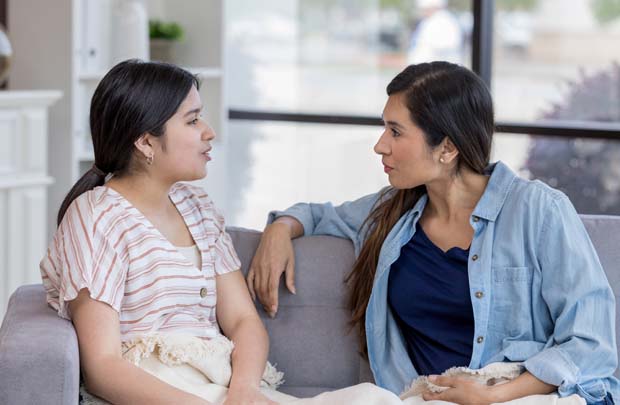
When children share their adoption stories, they are educating others while owning and understanding their story. But no child should feel obligated to be a spokesperson for adoption. Their story belongs to them.
As an adoptive parent, you can help your child decide how—and how much of—their story they share.
How to prepare your child to talk about adoption
If you child does want to share their story, be sure they are sharing it strategically and in a way that maintains their safety and privacy.
As explained in the Strategic Sharing fact sheet created for youth by the National Resource Center for Youth Development (NRCYD):
“Strategic sharing means you need to be clear about what you will say. Your first goal is to protect yourself, other people who might be involved in your story, your audience, and your personal story. You’ll want a plan. You’ll want control about what parts of your story you want to let out and what to hold back.”
As the Coalition for Children, Youth, and Families points out in their tip sheet, Empowering Children to Share Their Adoption Stories, to help your child form their story, you might start by asking them to tell you their story, and then helping them fill in blanks by answering questions about their life. As part of this conversation, you’ll have an opportunity to talk about emotions that come up.
For example, you might say to your child: “I can’t imagine what it feels like to know your birth parents struggled a lot, but it sounds like you feel sad for them and maybe a little angry at the world for there to be such hard times in life.”
Have these initial talks in a private place and make sure they remain between you and your child, unless he or she gives you permission to share.
It also may be helpful to work with your child on a “cover story,” an edited version of their adoption story that they are comfortable sharing with casual acquaintances. Omitting information is not dishonest; it is part of the process of setting healthy boundaries.
The NRYCD guide refers to this kind of approach as the red light, yellow light, green light strategy:
- Green light—can be made to anyone: “I live in a home.”
- Yellow light—give glimpses into private information, typically shared with peers and classmates: “I live in a foster home.”
- Red light—usually limited to family and close friends: “Due to the physical abuse I went through, I was taken from my biological parents and now live in a foster home.”
However they frame it, know that over time, your children will most likely change their story as they feel more or less comfortable sharing certain aspects. They also may adjust their story depending on who they are telling it to.
Preparing to share their story with a group
If you older child has decided to share their story with a group, it’s your job to be sure that they are prepared. Be sure they’ve practiced, know who they are talking to, and are supported during and after their presentation. If they are speaking in a moderated setting, ask for questions in advance. Be sure they know not to share too many details that can identify them to a stranger (such as their full name, address) in these more public settings.
Know that speaking publicly and answering questions can bring old issues to the surface and invite feedback that they might be unprepared to respond to from strangers who hear their story. After you child shares their story, be sure to debrief with them afterward.
Read more about preparing youth to speak in public in this NRCYD fact sheet, A Guide to How to Help Youth Prepare for Speaking Engagements (1.5 MB PDF).
Additional resources
- Parenting Your Adopted Teenager, a fact sheet published by Child Welfare Information Gateway